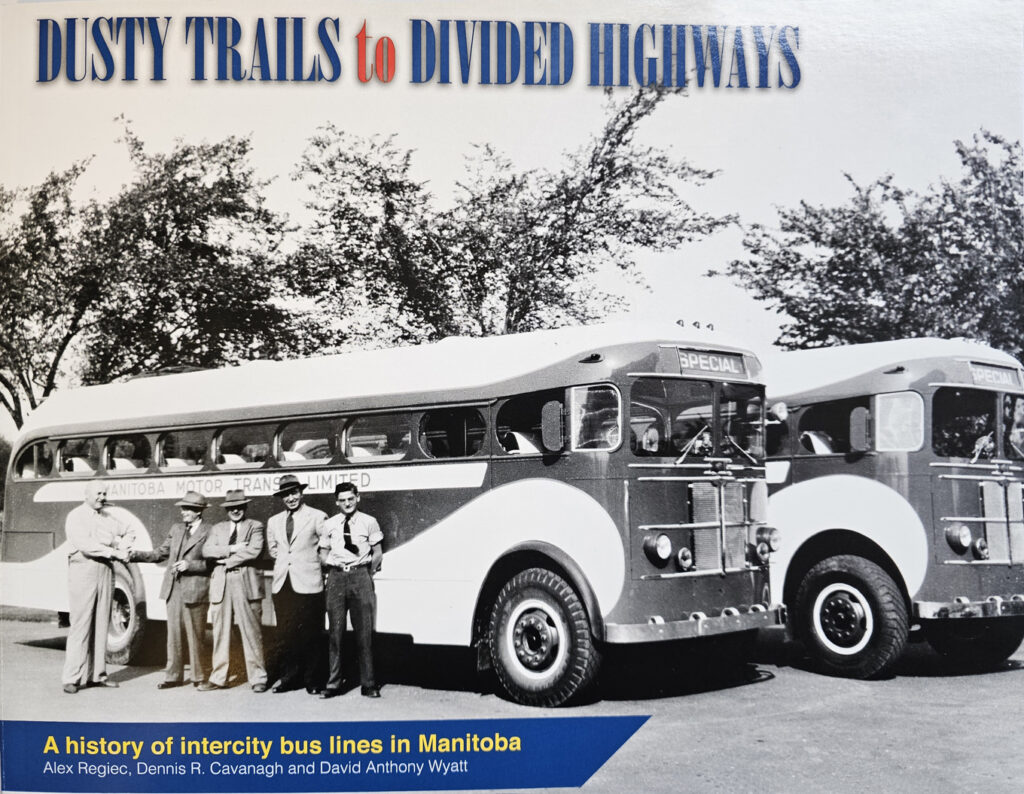The passing world of Inter-city bus lines

Mass transit between urban population centres early became a necessity in the harsh world of the pioneer prairie dweller. Multi-passenger stagecoaches (1871 to 1878) were the prototype, replaced for a while by the railway in Winnipeg after 1878. In those early days, traffic was primarily north-south between Winnipeg and Minnesota, but as communities sprang up around the Red River Valley, local intercity transportation became increasingly important. By 1912, a bus service was opened between Transcona and Winnipeg, followed five years later by another from Lockport. And so it began.
Alex Regiec, former Operations Planner for Winnipeg Transit for 29 years; Dennis R. Cavanagh, a bus operator for Grey Goose Bus Lines; and Avid Anthony Wyatt, an IT system administrator for the University of Manitoba have co-authored a book detailing the birth, growth, and gradual demise of the intercity bus system in Manitoba.
They trace the history of well-known company names as the Grey Goose Bus company started in Winnipeg in 1924, and history of Motor Coach Industries also stated in 1924 at 205 Fort Street in downtown Winnipeg to eventual acquisition by another Winnipeg manufacturer, Newer Flyer Group, in 2015. Today, New Flyer Industries is a publicly traded company headquartered in Winnipeg. It is the largest bus and motor coach manufacturer in North America.

The book is called Dusty Trails to Divided Highways and it can be purchased at McNally Robinson Booksellers for $39.95. Pick up a copy today. It reveals so much about the entrepreneurial spirit behind the early days of Manitoba and Winnipeg.
Alex Regiec is a member of the Lifestyles 55 Digital Radio group.

